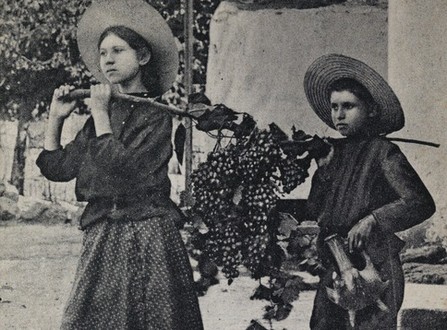The First Aliyah
The beginning of the return to Zion, the first mass immigration wave to the Land of Israel after 2,000 years of exile, was called “The First Aliyah.”
In the last quarter of the 19th century, about 30,000 young people left their homes in Europe and Yemen and made their way to the Land of Israel where they laid the foundation for the new Hebrew settlement. This wave of immigration was part of a larger migration of Jews, who more commonly ended up in the major cities of Central and Western Europe and even other continents, including North and South America, Australia and South Africa.
The year 1882 is usually considered the start of the First Aliyah. Around the same time, a Jewish national movement that would eventually develop into the Zionist movement, began to form. The year 1904 is generally held as the end of the First Aliyah and the beginning of the second wave of immigration, known as the Second Aliyah.
The New Yishuv
During those 22 years, the members of the First Aliyah established new Hebrew settlements and agricultural communes that became the basis of Jewish settlement in the Land of Israel, known as the new Yishuv. These 32 colonies and agricultural farms encompass the story of the heroic pioneers who came to make the desert bloom. The establishment of the settlements laid the foundations for the development of the Hebrew agricultural economy, which is considered one of the First Aliyah’s great achievements. The establishment of agricultural projects such as the winery in Rishon Lezion and the purchase of land by philanthropists and organizations, the most prominent among them Baron Edmond James de Rothschild, are also regarded as major accomplishments.
Enormous difficulties and personal sacrifice accompanied the establishment and development of the farming colonies, which were the jewel in the crown of the new Yishuv. Among the first colonies established were Rishon Lezion, Zichron Yaacov, Rosh Pina and Petah Tikva. Later, Rehovot, Menahemia, Metula, Nes Ziona, Gedera, Hadera, Atlit and other colonies followed.
The New Jew
The idea of “The New Jew”—the aspiration for a new type of Jewish figure who was strong, sturdy, muscular, a farmer and a warrior—developed at the same time as the First Aliyah. The revitalized image was a sharp retort to the contemporary perception of the Jew, who was considered weak, cerebral and foreign in nature.
The reasons for the First Aliyah clearly explain its members’ passionate embrace of the new ideal: upheaval among Russian Jewry in the wake of the 1881–1882 pogroms, which strengthened the recognition of the need for a Jewish state; the rise of the Jewish Enlightenment and the acknowledgment that the solution for the Jewish people did not lie in the Diaspora; the development of a Jewish national movement embraced by many Jews who aspired to immigrate and build a productive life in the Land of Israel with the goal of establishing a Jewish state.
The image of the New Jew integrated organically into the spirit of the times. Theodor Herzl and Max Nordau, among the leaders of Zionism, encouraged the new ideal and instilled the understanding that establishing a state necessitated both a high level of physical ability as well as physical and mental resilience.




